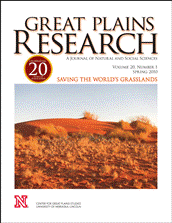Center for Great Plains Studies

Great Plains Research: A Journal of Natural and Social Sciences (through 2013)
Date of this Version
Fall 2009
Document Type
Article
Citation
Great Plains Research 19 (Fall 2009):215-23.
Abstract
We interviewed 200 tourists at Fort Robinson State Park and Chadron State Park in the Pine Ridge region of northwestern Nebraska during July and August of 1997 to determine attitudes toward elk (Cervus elaphus) and elk management in Nebraska. Fifty-nine percent of the respondents were aware that elk occupied the Pine Ridge, 95% favored free-ranging elk, and 55% favored hunting as a means of managing the population. Nebraska residents were more aware of elk and elk hunting in the Pine Ridge than were nonresidents. Also, more residents had observed elk and were willing to drive longer distances to view elk in the Pine Ridge. Respondents in older age groups (55–64) were more knowledgeable about elk. More urban tourists were in favor of elk than those from rural communities, but attitudes toward elk hunting were similar between urban and rural residents. Seventy-six percent of respondents wanted an increase in the population of elk. Men were more aware of elk populations than women and more supportive of hunting as the best method to manage the population. We found no differences between gender for maintaining free-ranging elk, knowledge of hunting seasons, or willingness to drive, pay, or spend time to view elk. Our results revealed that tourists had positive attitudes toward free-ranging elk and management practices in Nebraska. Elk herds should be managed to provide maximum opportunity for both consumptive and non-consumptive uses while minimizing negative impacts to property owners and the ecosystem.


Comments
Copyright 2009 Center for Great Plains Studies, University of Nebraska-Lincoln. Used by permission.